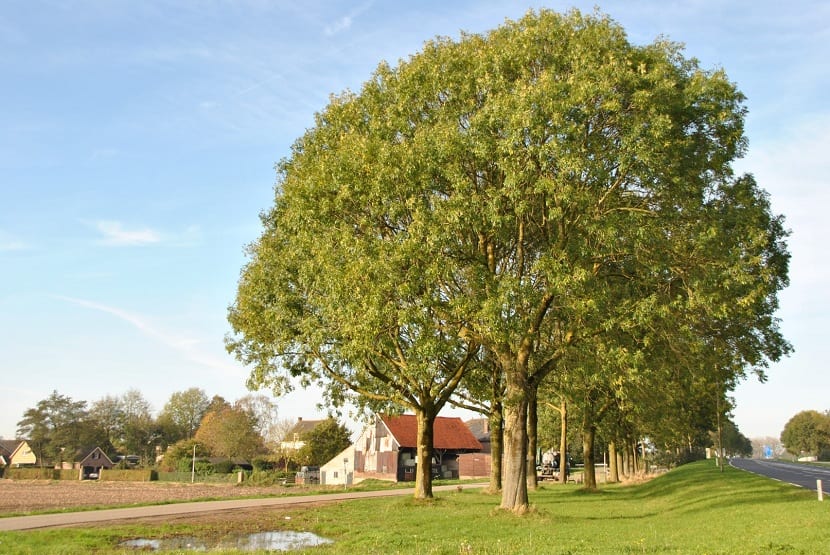
Today we are going to talk about a tree that is considered the «tree of good luck». Its about common ash. Its scientific name is fraxinus excelsior and is known for its good luck through ancient beliefs. It is large in size and has quite dense foliage. It is perfect for shading in a wide range and, in addition, it is beautiful when the fall season arrives and its leaves turn yellow. In this article we are going to tell you everything you need to know about ash.
Do you want to learn more about this lucky tree? You just have to keep reading 🙂
Key features
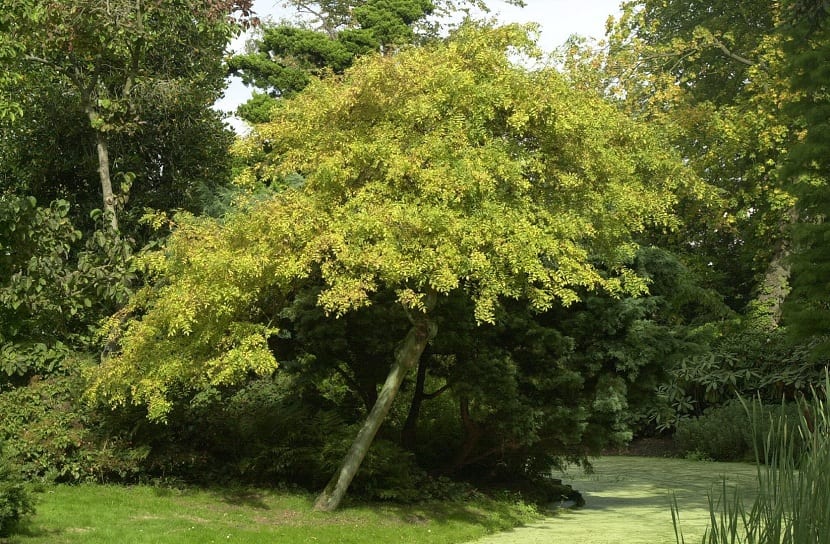
As we have mentioned before, the ash is a deciduous tree and belongs to the Oleaceae family. This lucky tree was used by the ancient Romans to the construction of fences and walls due to the density and quality of the wood. It comes from Europe and its distribution area where the greatest abundance can be observed is in Spain and Portugal. Although to a lesser extent, it can also be found in some countries that have a tropical climate and in some areas of North America.
One of its characteristics that makes it special is that it has a great ability to adapt to temperate environments. Its strong branches and dense foliage allow it to have enormous wind resistance. However, its weaknesses are that it does not withstand extreme temperatures, both hot and cold, nor can it stand drought.
It has a rounded crown about seven meters in diameter and quite dense and spreading branches. It is a perfect tree to sit under its shelter and enjoy the sound that the leaves make with the wind while protecting you from the sun. It has a size that ranges between 8 and 12 meters, in general, although some specimens have been found that can measure up to 20 meters. These specimens of 20 meters plus the density of the foliage make them really beastly large trees.
Its leaves have a typical glossy green film color. The branches are quite thin and have leaves that have between 9 and 13 leaflets. These leaves turn yellow in fall and fall off in winter.
As for the trunk, it is quite hard and strong. It has a cylinder shape with a dark colored crust.
Cultivation of common ash
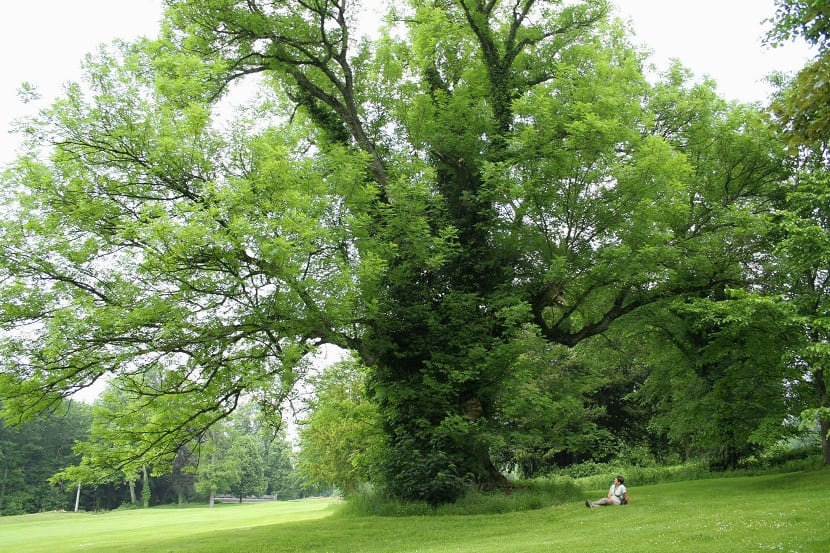
Through the trunk we find that some branches emerge with quite simple white flowers but with great ornamental beauty. It blooms in the time of April and May when temperatures are highest. They release elongated fruits called samaras and inside there are seeds that are quite easy to collect. The samaras are green.
To sow the ash tree you have to have some clear aspects. It is not very difficult to cultivate and maintain since it has a great resistance to contaminated places and pests, making it perfect for planting in cities as an extra addition to ornamentation.
In nature, it develops in forests with fairly deep, humid, cool and rich organic matter. These are the environmental conditions you need in order to survive. For this reason, as we have mentioned before, it is not very resistant to droughts and the lack of environmental humidity.
It must be taken into account that, when we spread the seeds in the autumn season, they need land with 4 degrees of temperature so that they can germinate in about four months. If soil temperatures are lower, the seed will go dormant and will not germinate.
Once we have the fraxinus excelsior grown up, your care is just about having a good space where it can grow, abundant watering, have it in full sun and fertilize it at least during the spring. If we want its growth to be optimal, it must be pruned at least once a year.
Uses of fraxinus excelsior
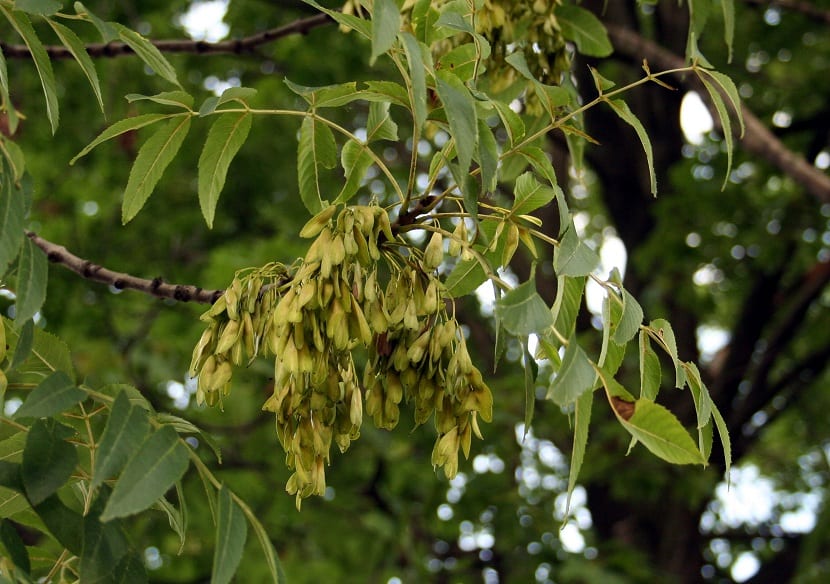
Although this tree has great firmness, one of the indicators that indicate that its care and maintenance are not correct is that of the wilting and death of the leaves. Once these begin to weaken, it can also affect the rest of the tree's crown, trunk bark and branches. On the contrary, if we can always keep it in good condition, it is capable of living between 80 and 100 years.
This tree is used mainly for ornamental purposes in both rural and urban areas. In general, it is planted on sidewalks, in large gardens as it is quite attractive and requires little care, and on public roads.
Its wood is used for cabinetmaking and carpentry. Wood is also used to manufacture numerous indoor platforms and thanks to its flexibility and resistance it is perfect for making some tool handles or even stools and furniture that have a lot of curves.
Another area where its wood is usually used is in sports and music. It is perfect for making baseball bats, bows, hockey sticks, and tennis rackets. It is also used to make guitars.
Medicinal properties
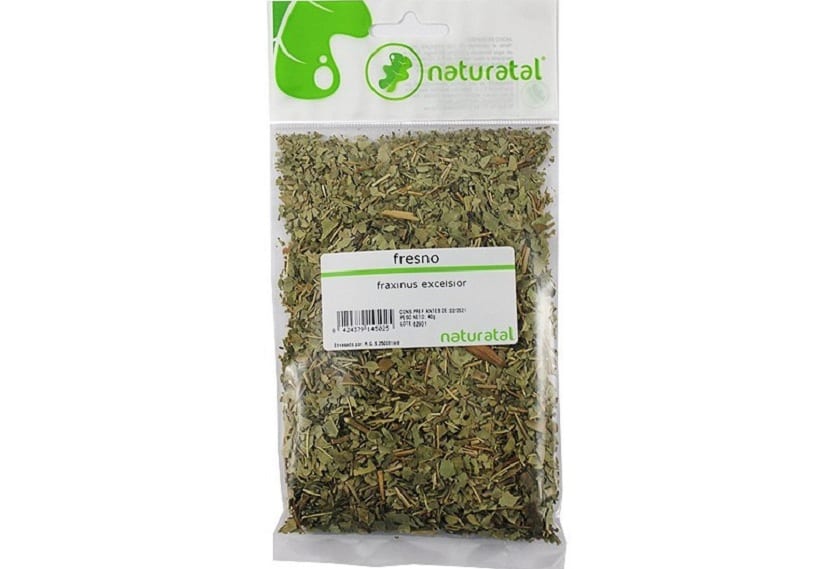
As if that were not enough, all the uses it has and the great beauty it has in certain areas of the year, it also has medicinal properties. It is perfect for the treatment of some diseases such as the common cold, flu and to lower fever. There are other more complex uses but it also serves and is to relieve the symptoms of constipation, hemorrhoids and hypertension.
The infusion prepared with the leaves of fraxinus excelsior it is key to eliminating that retention of liquids and some urinary problems. It is beneficial for those who suffer from kidney stones.
Depending on the treatment we need, ash can be consumed in different ways. Either using its leaves to make infusions or use the bark to make remedies that are sold in herbal stores and pharmacies.
I hope that with this information you can learn more about the ash tree.
Hello, I would like to know about its active principles and to know which of each of them performs the pharmacological effect. Very good information by the way, thank you very much.
Hello Abraham Jesus.
I tell you:
Active principles of its leaves
Flavonoids: includes rutin (0,1 - 0,9%)
Tannins
Mucilages (10 - 20%)
Mannitol (16 - 28%)
Inositol
Triterpenes: phytosterols.
Iridoid monoterpenes: syringoxide, deoxysiringoxidine
Active ingredients of the bark
Hydroxycoumarins: fraxinol. Fraxoside, fraxidoside, sculptures
Tannins
Iridoid glycosides
Manitol
To find out which one or which have pharmacological effects, I recommend consulting with a health professional.
Regards!
I have a potted brake that was born by chance. He is currently 1,3 meter tall with a 3 cm diameter stem and is very healthy. I'd like to keep it. Is it convenient to prune it? What? When?
Hi carmen.
No, it is not necessary to prune it. I only recommend planting it in a larger pot if you see that the one you have is getting too small, or if roots grow out of the holes.
Greetings.
I WANT TO KNOW HOW THE ASH FLOWERS ARE: I KNOW THAT IT IS DIOIC; THEREFORE I WANT A DRAWING OR PHOTO OF BOTH FLOWERS
MY MAIL IS: martarepetto@gmail.com
Hello, I need to acquire 7 specimens of Fresno about 2 meters high.
Some data?